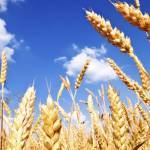Global Climate Change and Impact on Grain Production

All indications support the theory that the world’s climate is changing, with many agricultural areas becoming significantly warmer than they have been in past decades. With soils warming earlier in the spring and summer temperatures going up, a logical conclusion would be that farmers who grow grain would be able to plant earlier in the season and have a longer growing time before harvest. These conditions, according to some industry experts, will lead to better yields in grain crops. The predicted effects may occur, but weather professionals quoted in an article in World Grain have predicted that there will be other changes as well in production and trade of corn, wheat, and soybeans.
Soil temperature for germination and growth, hours of sunlight, and soil moisture must be optimal for the best yield of a particular grain crop. Each type of grain has its own requirements; for instance, corn won’t sprout if the soil is too cold, while some other seeds require cooler soil and won’t grow well in very warm soil. Many crops will grow under less than perfect conditions, but the plants may not produce to their potential and might be more subject to disease if the climate is not what they need.
A changing climate may boost vigorous growth and increase yield in some crops, but for other crops, the changes may mean that conditions in a region that has traditionally produced corn or wheat are no longer as suitable for that crop. At the same time, a region that has not been known for production of a specific grain may become more favorable for that crop. In this case, repercussions will include disuse of planting, harvesting, processing, and storage facilities in the traditional location and a dearth of these support structures in the crop’s new production area. Transportation channels are likely to change, the demand for fertilizer and other chemicals will shift, and producers may run into problems as they try to manage unfamiliar crops on their land.
The article noted that some changes in planting have already taken place. For instance, wheat and barley were historically the primary crops grown in North Dakota. In the last decade, the acreage planted to corn in that state has increased by 148% so that nearly one acre of every seven is now producing corn.
The shift in climatic conditions introduces some questions that are difficult to answer, such as how biotech crops will adjust to varying temperatures. Traditional grain crops have usually been able to weather normal variations in weather from year to year, but it is possible that biotech crops may react in a different way.








